Waterproof/Water-resistant Membrane For Roof
- Loading Port:
- Tianjin
- Payment Terms:
- TT OR LC
- Min Order Qty:
- 1000 m²
- Supply Capability:
- 10000 m²/month
OKorder Service Pledge
OKorder Financial Service
You Might Also Like
Product description
Polyvinyl chloride PVC waterproof membrane is a kind of excellent performance of polymer waterproof material,PVC resin as the main raw material,add all kinds of special additive and anti-aging composition,the use of advanced equipment and advanced technology extrusion rolling is made.The product has the tensile strength and elongation high shrinkage of small,low temperature soft good,long life and other advantages, the products wide 1.2m to 3.0m, the thickness of 0.8-2.0 mm(special specifications can be customized),stable performance,reliable quality,construction is convenient.
Application Scope
The products are widely used in all kinds of civil construction,subway,tunnel,water conservancy,landfill site,chemical industry,metallurgy and other areas of waterproof seepage control,corrosion engineering
Features:
Excellent anti-aging property.
Puncture- resistant.
Welding construction,
High tensile strength, good elongation, good dimensional stability.
Good plasticity.
It has self-extinguishing from fire property.
Materials surface is smooth, fast color, stain resistance.
More wide, Wastage become less when being used.
Type:
N1—Exposed PVC waterproof membrane.
(It is mainly used as details treatment for exposed roof waterproof project)
N2—Non-exposed PVC waterproof membrane.
(It is mainly used as details treatment for non-exposed roof waterproof project)
L1—Exposed PVC waterproof membrane with fabric
(It is mainly used for exposed roof waterproof project)
L2—Non-exposed PVC waterproof membrane with fabric.
(It is mainly used for non-exposed roof waterproof project)
W1—Exposed reinforced PVC waterproof membrane .
(It is mainly used for steel structure roof exposed waterproof project)
W2—Exposed reinforced PVC waterproof membrane .
(It is mainly used for steel structure roof non-exposed waterproof project)
Advantages

Technical Parameters
No. | Item | Index | |||||
| 1 | Thickness of resin layer of the middle fabric ,mm≥ | - | - | 0.40 | 0.40 | 0.40 | |
| 2 | Tensile performance | Max tensile strength,N/cm ≥ | - | 120 | 250 | - | 120 |
| Tensile strength,NPa ≥ | 10 | - | -10 | - | - | ||
| Max elongation% ≥ | - | - | 15 | - | - | ||
| Breaking elongation % ≥ | 200 | 150 | - | 200 | 100 | ||
| 3 | Heat treatment size change rate%≤ | 2.0 | 1.0 | 0.5 | 0.1 | 0.1 | |
| 4 | Cold bonding | -25°c No cracks | |||||
| 5 | Watertightness | 0.3mPa,2h waterproof | |||||
Packaging & Shipping

product show

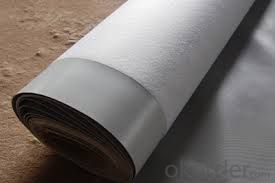
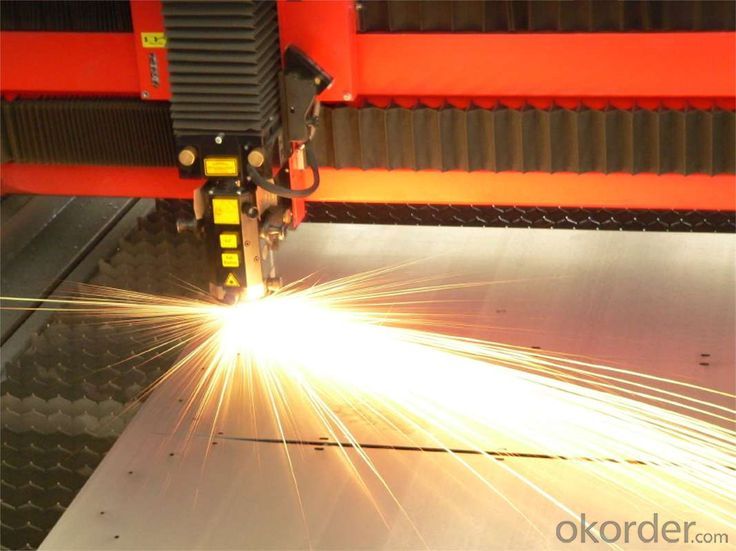

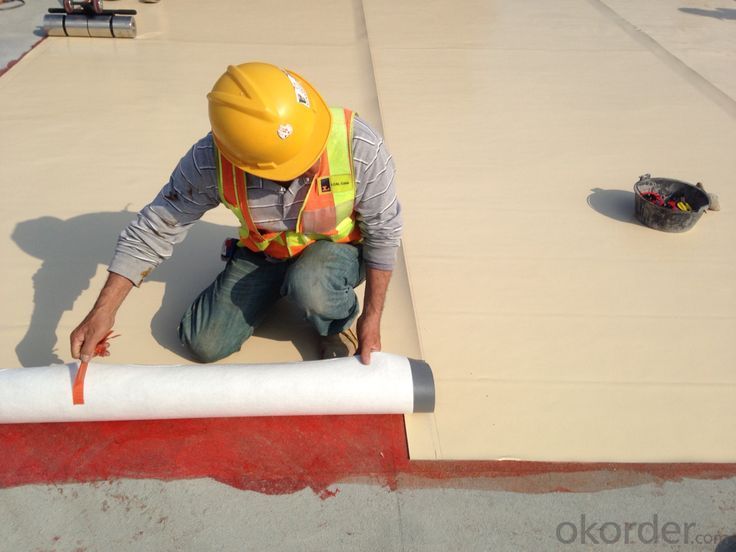
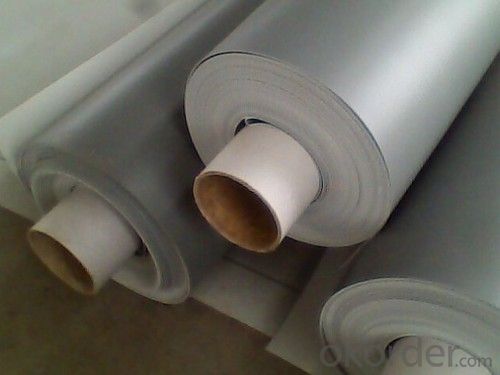

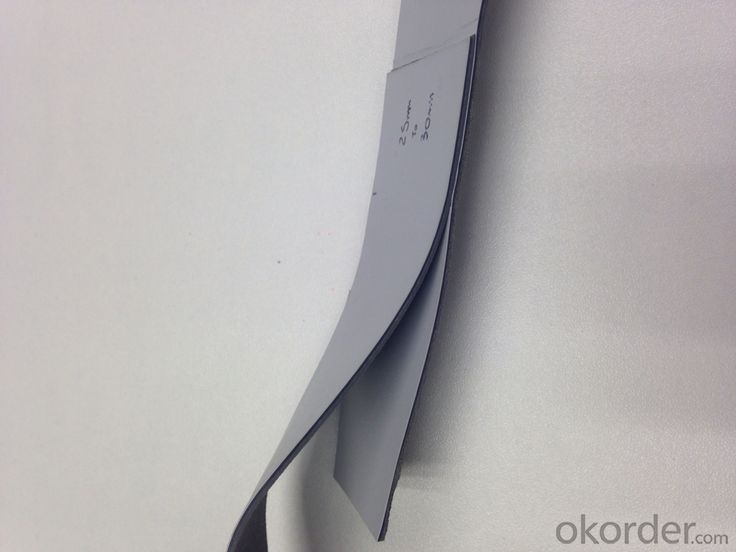

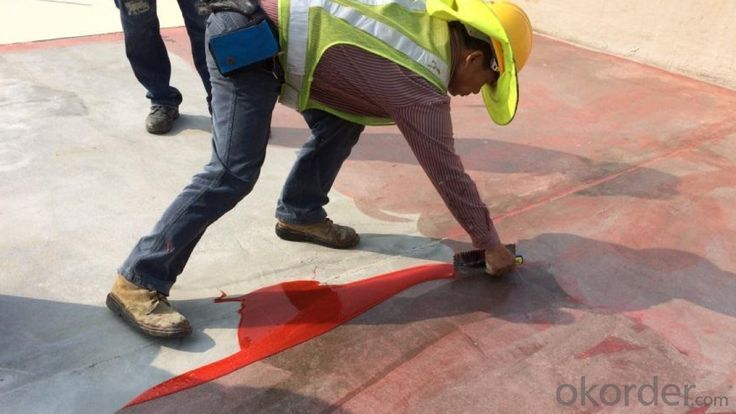
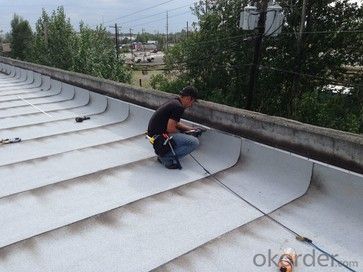
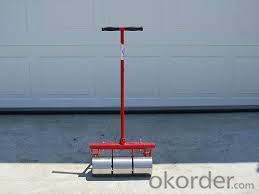
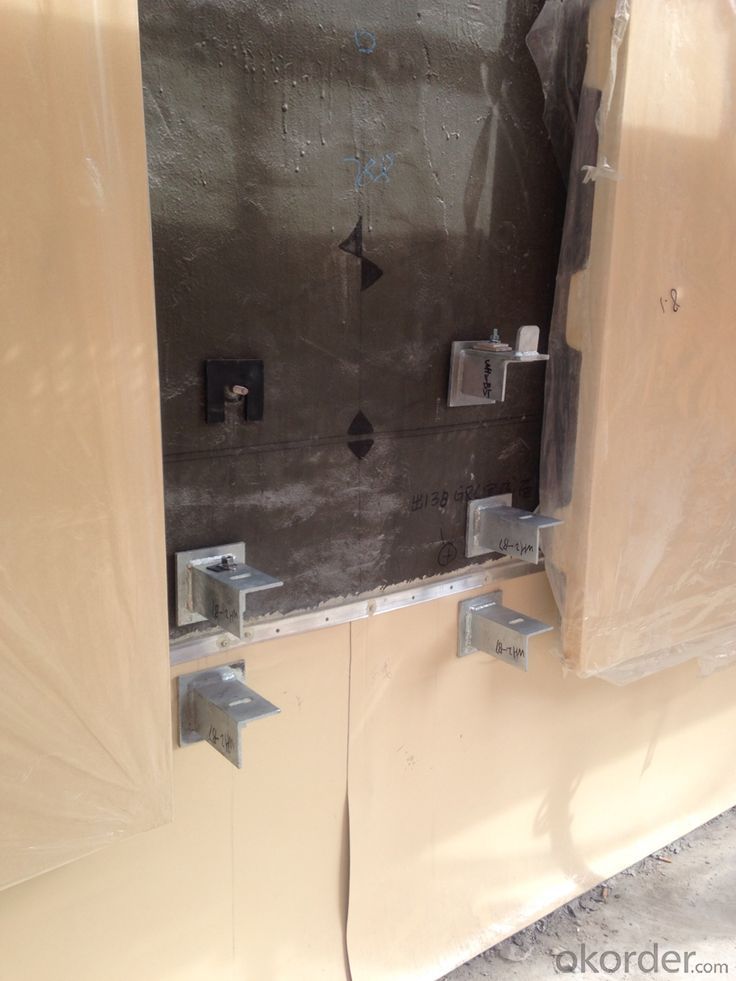
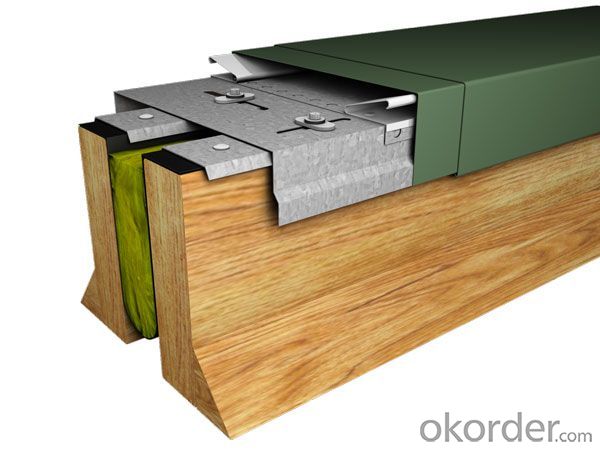
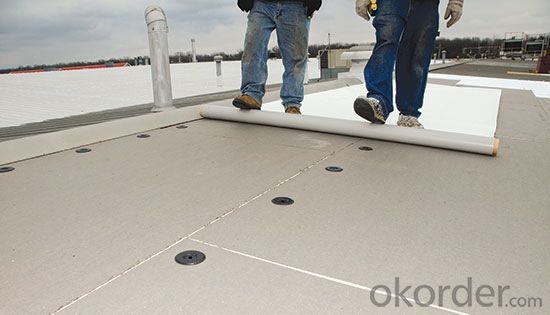
FAQ
Q: What's the delivery time ?
A: 3-5 days for 1-600 rolls, 10-15 days for container.
Q: What's the payment terms ?
A: TT/LC
Q: How do you make replacement with quality problems ?
A: New replacement will be packed into your next order or send to you directly after receive video or photo about quality problems
- Q:Can a waterproofing membrane be used in elevator pits?
- The utilization of a waterproofing membrane in elevator pits is possible. Due to their subterranean location, elevator pits are susceptible to water intrusion from sources like groundwater or moisture. A waterproofing membrane acts as a safeguarding layer that is applied to the walls and floor of the elevator pit, effectively obstructing the passage of water. This protective barrier prevents water from causing harm to vital components of the elevator system, such as electrical equipment, pumps, and hydraulic systems. Implementing a waterproofing membrane in elevator pits substantially diminishes the likelihood of water damage and corrosion, ensuring the elevator's safe and efficient operation.
- Q:Can a waterproofing membrane be used for fountains or water features?
- Indeed, fountains or water features can make use of a waterproofing membrane. Such membranes find widespread use across various applications, encompassing below-grade waterproofing, roofing systems, and even ponds. Their purpose is to establish a barrier against water infiltration, thereby safeguarding the underlying structure against water-related harm. In the context of fountains or water features, a waterproofing membrane serves to avert leaks and seepage, ensuring that the water remains confined within the intended boundaries. Furthermore, these membranes typically possess flexibility and durability, rendering them well-suited for deployment in areas subject to perpetual water exposure and potential movement.
- Q:What is the best waterproofing membrane for my project?
- The best waterproofing membrane for your project depends on several factors such as the type of project, location, budget, and specific requirements. It is recommended to consult with a professional waterproofing expert who can assess your project's needs and recommend the most suitable membrane based on these factors.
- Q:Can a waterproofing membrane be used for water fountains or decorative features?
- Water fountains and decorative features can benefit from the use of a waterproofing membrane. These membranes are specifically designed to create a protective barrier against water penetration and can be applied to various surfaces, including those found in water fountains and decorative features. The materials used to make these membranes, such as rubber, bitumen, or liquid-applied coatings, possess excellent waterproofing properties. By applying a waterproofing membrane, you can effectively prevent water from infiltrating the underlying structure and causing damage. This is particularly crucial for water fountains and decorative features, as they are constantly exposed to water. Moreover, waterproofing membranes can also play a role in averting leaks, cracks, and other potential issues that may arise from water exposure, thereby extending the lifespan of the fountain or decorative feature.
- Q:Are waterproofing membranes resistant to gasoline?
- Yes, waterproofing membranes are generally resistant to gasoline.
- Q:Can a waterproofing membrane be applied to both interior and exterior surfaces?
- Yes, a waterproofing membrane can be applied to both interior and exterior surfaces. The purpose of a waterproofing membrane is to prevent water infiltration and protect the underlying surfaces. Whether it is applied on the inside or outside, the membrane serves the same purpose of creating a barrier against moisture. Interior waterproofing membranes are commonly used in basements and crawl spaces to prevent water seepage from the ground into the interior of the building. Exterior waterproofing membranes are typically applied on the exterior walls and foundations to prevent water penetration from rain, groundwater, or other external sources. Both types of membranes are designed to be durable, flexible, and resistant to water, ensuring the longevity and structural integrity of the surfaces they are applied to.
- Q:Does a waterproofing membrane require a topcoat or sealer?
- Yes, a waterproofing membrane typically requires a topcoat or sealer in order to provide additional protection and enhance its effectiveness. While the membrane itself is designed to prevent water penetration, applying a topcoat or sealer can further reinforce its waterproofing capabilities and extend its lifespan. The topcoat or sealer acts as an extra layer of defense against moisture, UV rays, and other potential sources of damage. Additionally, it can help seal any small cracks or imperfections in the membrane, ensuring a tighter seal and reducing the risk of water infiltration. Therefore, while a waterproofing membrane can offer some level of protection on its own, the addition of a topcoat or sealer is generally recommended for optimal performance and longevity.
- Q:Can a waterproofing membrane be applied to concrete?
- Concrete can have a waterproofing membrane applied to it, which is a commonly used and effective method for protecting concrete structures from water damage. The membrane, usually made of flexible materials like rubber or polymer, is applied to the concrete surface to create a barrier that prevents water from entering and causing deterioration or structural harm. Various types of concrete structures, such as basements, foundations, roofs, and balconies, can benefit from the application of waterproofing membranes. To apply the membrane, the concrete surface needs to be cleaned and prepared, and a primer may be necessary. Then, the membrane can be applied using a brush, roller, or spray. It is crucial to carefully follow the manufacturer's instructions and ensure proper installation to achieve the desired level of waterproofing.
- Q:Can waterproofing membranes be used on concrete slabs?
- Concrete slabs can indeed utilize waterproofing membranes. In fact, it is a widely adopted technique to shield concrete slabs from water harm. The purpose of waterproofing membranes is to establish a barrier that halts water infiltration into the concrete surface. This becomes particularly crucial for regions susceptible to moisture, like basements, balconies, or swimming pools. Through the application of a waterproofing membrane, the concrete slab effectively safeguards itself against water infiltration, which might otherwise trigger cracks, erosion, or the growth of mold. Moreover, these membranes have the added benefit of bolstering the overall longevity and durability of the concrete slab.
- Q:What are the requirements for frost resistance of basement floor polymer waterproofing membranes?
- High polymer modified asphalt waterproofing membrane is -30 degrees.
1. Manufacturer Overview |
|
|---|---|
| Location | |
| Year Established | |
| Annual Output Value | |
| Main Markets | |
| Company Certifications | |
2. Manufacturer Certificates |
|
|---|---|
| a) Certification Name | |
| Range | |
| Reference | |
| Validity Period | |
3. Manufacturer Capability |
|
|---|---|
| a)Trade Capacity | |
| Nearest Port | |
| Export Percentage | |
| No.of Employees in Trade Department | |
| Language Spoken: | |
| b)Factory Information | |
| Factory Size: | |
| No. of Production Lines | |
| Contract Manufacturing | |
| Product Price Range | |
Send your message to us
Waterproof/Water-resistant Membrane For Roof
- Loading Port:
- Tianjin
- Payment Terms:
- TT OR LC
- Min Order Qty:
- 1000 m²
- Supply Capability:
- 10000 m²/month
OKorder Service Pledge
OKorder Financial Service
Similar products
New products
Hot products
Hot Searches
Related keywords






























